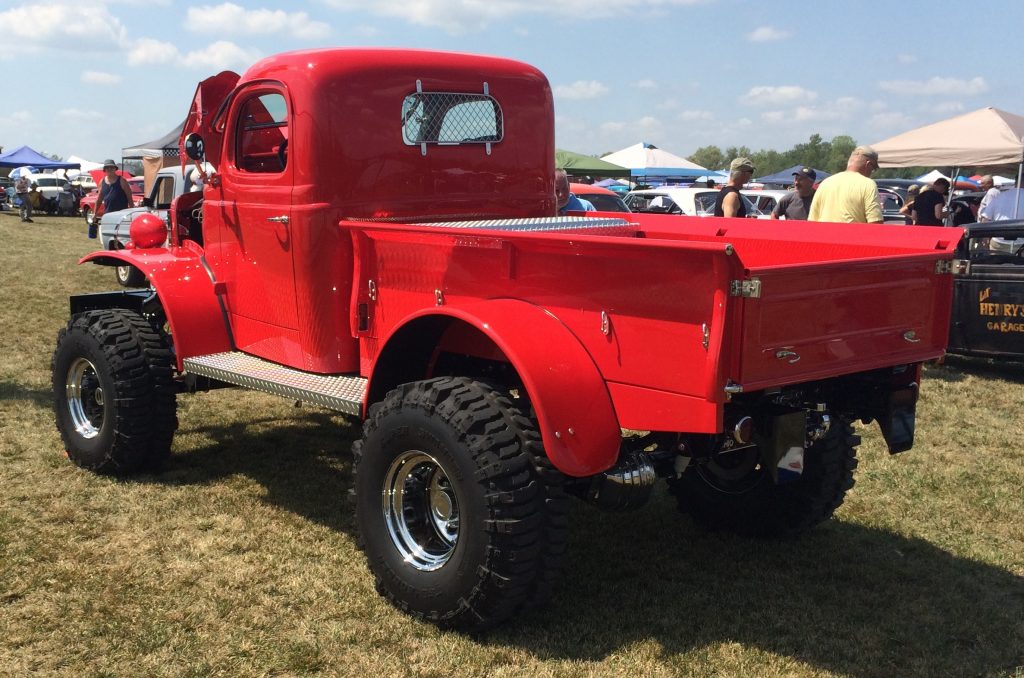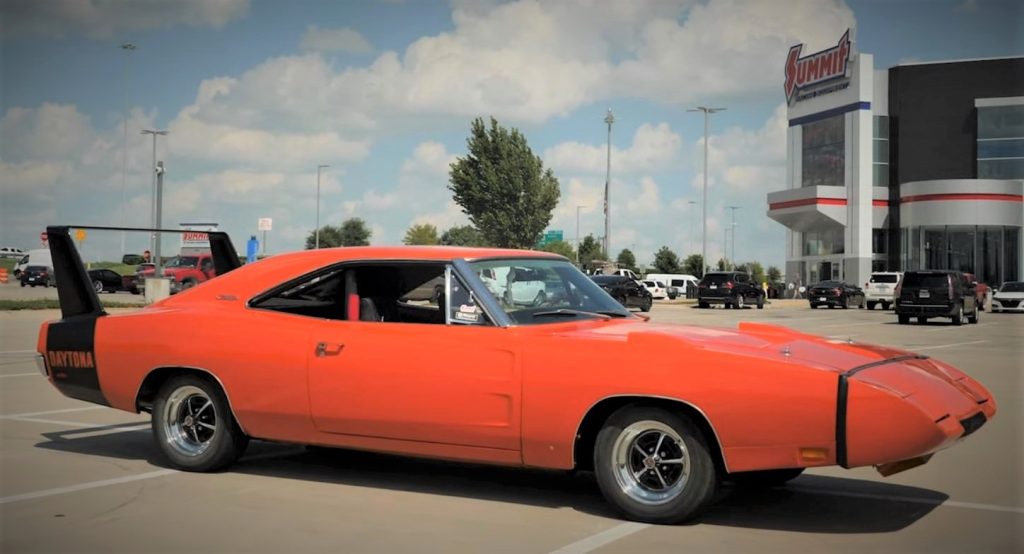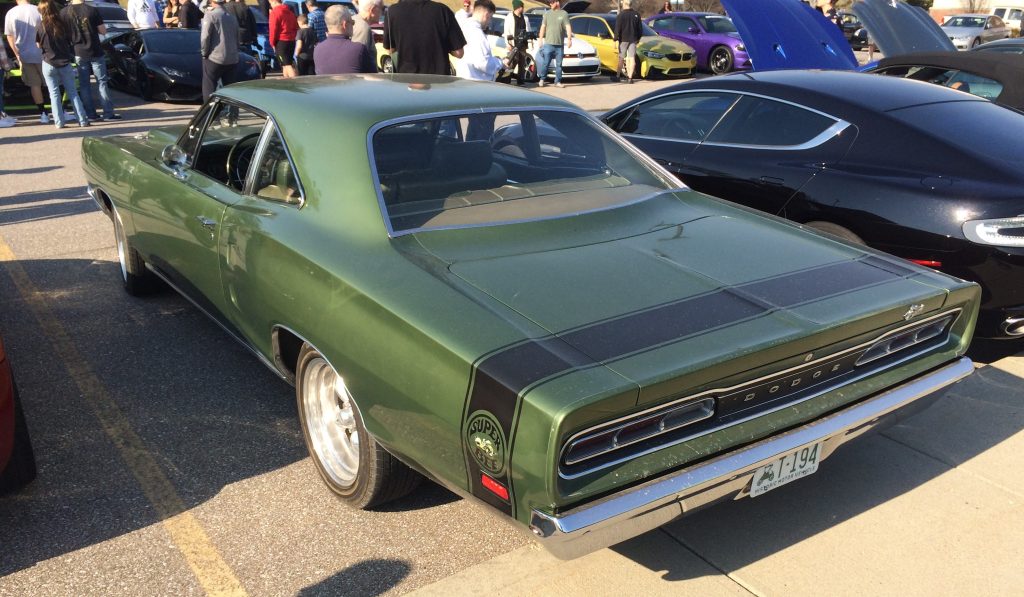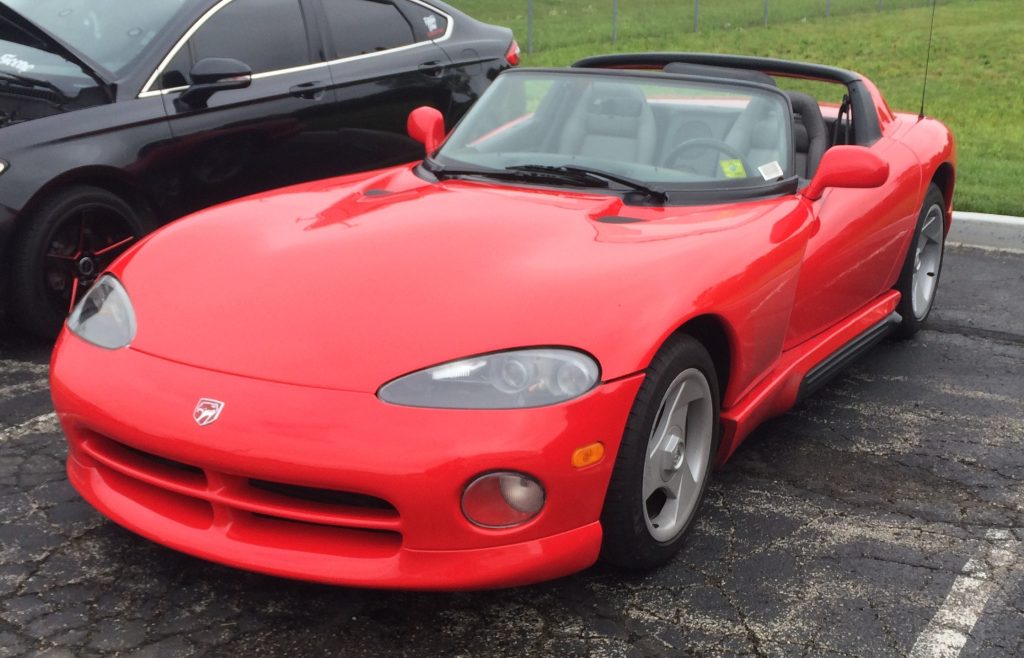To honor Dodge’s 100 years in the automobile business, we’ve compiled a list of our 10 favorite Dodge vehicles.
Shockingly, the 1996 Dodge Neon didn’t make the list. Heck, mine couldn’t even make it to the corner store. But hey, we’re not going to let one bad Neon with its bum transmission and porous head gaskets ruin 100 years worth of American automotive excellence. Truth is Dodge has produced some great, great vehicles. So many, in fact, that this list was nearly impossible for us to narrow down.
From the high-powered muscle cars of the 1960s and 70s to the 440-powered police cars that chased them, Dodge’s legacy spans across a broad spectrum of vehicles. This includes tire-shredding muscle cars, diesel-powered workhorses, luxury sedans—even trail-blazing minivans for discerning soccer mom.
Not surprisingly, our list focuses on the performance-oriented Dodge models. In chronological order, here are our Top 10 Dodge vehicles of all time (share yours in the comments section below):
1946 Power Wagon

Back when 4x4s were strictly for commercial or military use, the four-wheel drive Power Wagon helped bring 4×4 capability to American civilians. Intended mainly as an off-road vehicle, in many ways the Power Wagon helped launch the four-wheeling movement that continues today.
1962 Dodge Dart 413 Max Wedge
This is the car that put Dodge on the muscle car map.
It married the big block power of the 413 engine—an engine that was reserved for bigger Chrysler models—with the Dodge Dart, which was revamped for the 1962 model year. The 1962 Dart offered a smaller wheelbase and lighter curb weight than previous models, along with the new Max Wedge engine option—a dream for performance-minded consumers.
1965 Custom Sport Special with High Performance Package
While the Power Wagon helped propel the 4×4 movement, the Dodge Custom Sports Special may have been the precursor to the American sport truck. Offered for the 1964 and 1965 model years, the “Sweptline” pickup wasn’t exactly coveted for its looks, but it came with a 426 Wedge engine under the hood. That type of potent power package made it desirable and helped drastically boost Dodge’s pickup sales in the mid-1960s.
We’ll call it a muscle truck.
1966 Coronet HEMI
The Dodge Coronet, along with the Dodge Charger, brought the legendary 426 HEMI to the streets in 1966. Yes, it was a detuned version of the original 426 HEMI that wreaked havoc on NASCAR tracks, but the still potent 426 street HEMI could be ordered in any Coronet model.
Elephant in the room: Why did we pick the Coronet over the Charger?
Because the Coronet was considerably less flashy than the fastback Charger, we see HEMI-powered 1966 Coronets as one of the 1960s ultimate sleeper cars.
1969 Dart GTS 440
The Dodge Dart GTS was created to compete against the Chevrolet Nova SS’s of the world. But Dodge also offered a limited number of GTS models with its 440 cubic-inch engine for drag racing duty. A total of just 640 powerful 1969 GTS 440s were made, making them ultra-rare, ultra-cool, and ultra desirable.
Ultra.
Charger Daytona

The 1969 Charger is awesome all by itself (even without the Confederate flag painted on top). But the rare and distinctive 1969 Dodge Charger Daytona achieved legendary status, becoming the first car to break 200 miles-per-hour in its NASCAR trim. All told, Dodge made just over 500 of these “Winged Warriors,” offering 440- and 426 HEMI-powered versions.
Super Bee

Midway through 1969, Chrysler added a new engine option to its lineup: the 440 Six Pack.
The 1969 1/2 Dodge Super Bee could be had with the new 440 Six Pack engine, allowing it to run with the HEMI cars even though it was about $1,000 less. The Super Bee gave the consumer drag racer styling and a total of three big block options: 383, 426 HEMI, and 440 Six Pack.
Any doubt, this was the height of the muscle car era?
Challenger T/A
Dodge entered the pony car market in 1970 with the introduction of the Challenger.
Designed for SCCA Trans-Am road racing, the 1970 Challenger T/A featured a de-stroked 340-cubic-inch engine, which displaced 303 cubic inches to meet SCCA cubic inch limitations. In addition, the T/A used the new Six Pack setup introduced on the Super Bee in mid-1969. The Challenger T/A proved to be wildly popular—even in colors like Plum Crazy, Top Banana, and other High-Impact colors.
Viper RT/10

Referred to by some as the Cobra of the 90s, the Viper brought super car characteristics to the American performance scene in the 1990s. The 1992 Viper RT/10 debuted with an aluminum V-10 engine which produced massive amounts of low-end torque and about 400 horsepower—by far the most powerful output by a roadster at the time.
A total of only 155 Vipers were made during its first year.
2011 Challenger SRT8 392
Our representative for new Mopar muscle is the 2011 Challenger SRT8 392.
This is the car that put the potent new 6.4L HEMI under the hood while resurrecting the old 392 HEMI moniker from the late 1950s. We resisted the urge to include the 2015 Challenger Hellcat here. Sure, it’s said to be the most powerful factory muscle car ever at 707 horsepower—but it’s not even available yet.
Until it is, we give the original SRT8 392 the nod as our king of the third-gens.

DODGE CHARGER DAYTONA ALL THE WAY